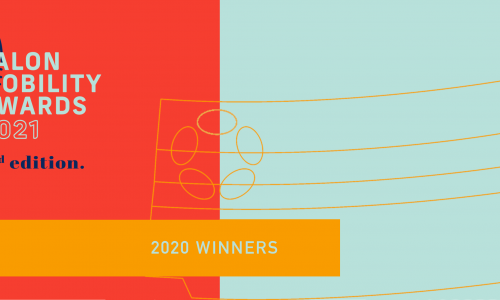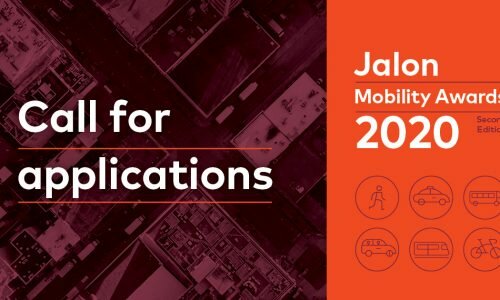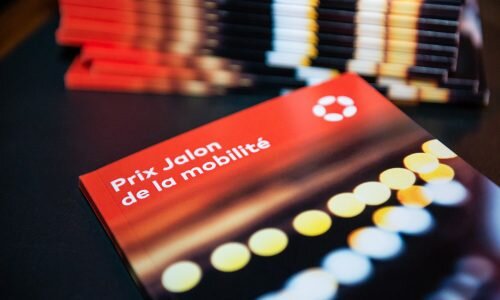
Transportation accounts for 41% of annual greenhouse gas emissions (GHG) in Québec and represents a major lever in terms of responding to the economic and environmental challenges ahead. At the same time, new societal trends and technological breakthroughs are accelerating change in terms of how people and goods are getting around.
In this contest, the “Reduce-Transfer-Improve” (RTI) approach serves as a way to logically regroup and analyze the sustainable and intelligent urban mobility challenges in the short and medium term.
Reduce
- Local mobility
Transfer
- More active mobility
- Tailored public transit options
- The fight against solo driving
Improve
- The electrification of vehicles
- A connected and intelligent city
Local mobility
Trends
The most effective way to reduce GHG emissions will always be to reduce the amount of travel itself. To achieve this, we need to either reduce the need to travel, limit the distances to be covered, or reduce the frequency of these trips. Businesses have an essential role to play in this. They need to ensure that their locations are easily accessible, encourage their employees to telework, use third places or co-working spaces, support flex hours and/or encourage alternative mobility solutions. These programs also have beneficial effects on employee morale, quality of life and retention, which is important to note in the context of a labour shortage. To this end, organizations like Jalon and the Centres de gestion de déplacement (CGD) are working together with businesses to establish travel management plans that take all of these variables into consideration.
The incessant development of urban zones also means that we need to rethink mobility at smaller scales. Neighbourhoods or communities with approximately 5,000 inhabitants are often cited as being living areas that provide easy access to nearby shops, schools, leisure centres and employment centres. Urban planning is evolving to ensure a more effective, balanced and human integration between real estate, infrastructure and mobility. Space is now provided on roads for micromobility devices and new buildings are designed to better integrate emerging mobility services.
Neighbourhoods that foster proximity and citizen engagement help trigger change and bring about the development of new support and sharing services—with travel naturally being one of the first services that neighbours will share.
Local issues and where Jalon stands
As part of Canada’s Smart Cities Challenge, Montréal proposed a “neighbourhood mobility” component that aims to facilitate short-distance trips within neighbourhoods and offer local mobility solutions adapted to the specific realities of different communities. This ensures that all of the inhabitants can access the new mobility solutions, which include the implementation of a sharing and service management platform and the creation of self-managed vehicle fleets for collective use within the neighbourhood).
In the same spirit, we partnered with real estate promoters to develop the Im/mobility concept, which integrates mobility services offering at the outset of the building design that is shared with the other homeowners and included in the financial investment. A concept like this benefits everyone involved (promoters, financial investors, homeowners) and opens the door to a rethinking of urban infrastructure needs and regulations.
The development of micromobility offers a range of new formats (scooters, bicycles, minibus shuttles, eventual self-driving pods, etc.) to cover the first or last mile, and ultimately using heavier modes of transit used for longer distances. We’re looking at both the design and efficiency of these vehicles as well as the user experience they offer and their integration into an urban environment that will need to evolve from its current transit-related restraints (i.e., the predominance of parking spots and roads dedicated to cars).
More active mobility
Global trends
The second level of the RTI approach involves promoting evolution of modes of transport that are heavy emitters of GHG emissions—particularly solo cars—to more virtuous solutions like soft, collective or shared modes of transport.
The vast majority of urban trips are less than five kilometres long. In this context, active mobility solutions like walking and cycling are often the fastest, simplest and cheapest ways to get around. Beyond how effective they are over short distances, these modes of transport also promote urban health. Municipalities must take note of the positive economic impact of active mobility and encourage these practices by rethinking the space dedicated to them in the urban environment.
Local issues and where Jalon stands
The studies done on the subject show that the development of active mobility depends on removing a series of barriers that we have summarized in four complementary levels:
- Improving the availability and quality of pedestrian and bike paths to provide an infrastructure that reflects the usage habits of citizens. That’s what the Montréal project Réseau Express Vélo (REV) has set out to achieve with their goal of adding 150 km of additional bike paths to the existing 900 km network.
- Improve road cohabitation to ensure the safety and security of all modes of transport. To that end, the Montréal project Vision Zéro is aiming to reduce the number of annual deaths on city roads to zero.
- Developing safe bike parking spaces to ensure that cyclists can leave their bikes in a secure place once they arrive at their destination, which is the aim of projects like Vélo-Transit.
- Developing complementary services that provide information, the transportation of people or objects, change rooms for personal hygiene (which Rinse offers), equipment maintenance and repairs as well as insurance to cover these new services.
Tailored public transit options
Trends
Public transit is the cornerstone of urban mobility. It provides mass transport solutions right down the line, often driven by heavy modes of transport (trains, metros, tramways) and supported by more granular, lighter modes (buses, shuttles). Beyond the development of new lines and their operational efficiency, public transit is increasingly concerned about their appeal in terms of offering a modern user experience (real-time information, comfort at stops/stations and on board, complementary services, etc.).
The evolution of digital tools fosters the development of personalized offers like information or pricing adapted to different types of travellers or different transit uses. Where it makes sense, this customization also translates into “on-demand” mobility solutions, whereby stations, lines, and bus schedules effectively become virtual and are activated or aggregated depending on user demand.
In this context, self-driving shuttles will offer a wide range of possibilities and additional flexibility to respond to mobility demand, especially in less populated zones where there is a need to address feeder bus issues or to meet diverse needs (i.e., public transit at rush hour or a service dedicated to nursing homes during the day).
This evolution towards self-driving transport will result in a complete overhaul of the vehicle environment. The driver will be freed from the task of driving and can concentrate on other activities like passenger services. At the same time, passengers will have access to a wide range of new experiences on board, from entertainment options to enhancements that optimize work time.
Local issues and where Jalon stands
Montréal has already announced a number of major projects to improve public transit (REM, SRB Pie-IX, the extension of the blue line, the pink line project, etc.). Our goal is therefore to focus on on-demand transit solutions and self-driving shuttles enabled by artificial intelligence capabilities in Montréal.
Jalon supports experiments for self-driving shuttles like the one launched at Maisonneuve Market in the summer of 2019. Local considerations have a direct impact on how these vehicles function, most notably with regards to weather conditions, urban design and how passengers perceive and use these services.
On this last point, Jalon is continuing its work with Montréal-based l’École de design Nantes Atlantique to imagine different possible onboard services and will leverage Montréal’s impressive capabilities in animation, visual effects and gaming to explore new experiences for passengers.
The fight against solo driving
Trends
Did you know that, in Montréal, daily car commutes result in more than 25 million empty seats per year? And that, on average, there are 1.2 passengers per car during morning rush hour? This footprint (congestion and parking) and the public costs associated with it are excessive. Now is the time to implement solutions that foster more sustainable modes of transit that benefit all communities.
At the same time, there has been a behavioural shift from owning to renting or using goods and services as needed. This trend is increasingly on the rise in the world of transport, where vehicles are no longer individual owned but are part of a fleet that is owned and centralized by operators. Carpooling, carsharing, self-service vehicles and other platforms all aim to reduce car ownership.
This abundance of options can leave citizens feeling overwhelmed, which is why the development of MaaS (Mobility as a Service) aims to help centralize and facilitate access (via information, reservations and payment solutions) to a portfolio of complementary public and private multimodal solutions—all of which will foster user autonomy and the shift to alternatives to solo driving.
Local issues and where Jalon stands
As part of Canada’s Smart Cities Challenge, Montréal proposed an “integrated mobility” (MaaS) component with the aim of combining numerous modes of travel already available in the Greater Montréal Area and ensuring users easy access to these services via a single mobility account linked to a shared citizen identity.
Improving alternative mobility solutions—and access to them—is the key to generating and maintaining citizen interest in the services. But, that said, we’re convinced that the fight against solo driving is first and foremost a psychological issue. Through Chantier autosolo, a Jalon-led project, we are trying to understand the barriers and conscious or unconscious motivations at play to determine the best ways to foster a sustainable modal shift.
Beyond technological solutions and an understanding of usage habits, perceptions and behaviours, we have to remember that the migration from solo driving to more sustainable modes also requires the implementation of fiscal and legislative measures that make drivers pay the real cost of using their vehicles. Such strategies include the use of urban toll, increasing the price of parking vignettes and/or imposing the kilometre tax, the implementation of which would be facilitated by the advent of several digital technologies.
The electrification of vehicles
Trends
The third level of the RTI approach tackles how to improve the efficiency of existing modes when it isn’t possible to reduce travel or pivot to more sustainable solutions.
In this context, electric vehicles are an improvement compared to traditional gas-powered vehicles in that they contribute to the reduction of local GHG emissions. (In Québec, an electric vehicle that covers 150,000 kilometres will produce 65% less GHG emissions than a gas-powered car.) But an electric vehicle still generates the same other negative externalities as a gas-powered car (traffic congestion, footprint, road safety, etc.) and triggers a rebound effect of sorts (increased usage, increased inequality, the cannibalization of public transit, etc.).
Several small new industrial players are emerging around the world with business models tied to individual vehicles. To make up for lost time, the big international players are looking to buy solutions rather than be solo investors in R&D activities. At the same time, the rollout and capabilities of recharging stations are growing and new commercial models for purchasing energy are arriving on the scene (smart networks, etc.).
Local issues and where Jalon stands
The province of Québec has a number of undeniable strengths to foster electrification:
- A large production capacity of clean and renewable energy at a stable and affordable price
- A reliable and high-quality electric network
- A vast public network of recharging stations
- An abundance of raw materials required for battery production
Québec is also home to a number of companies specialized in the manufacturing of propulsion systems, recharging stations, vehicles and parts.
In this context, Jalon believes that the electrification of vehicles must first and foremost be prioritized in fleets, both public and private. Jalon has analyzed various financing possibilities for potential projects, including the use of electric vehicles as a showcase for new technologies. In 2020, Jalon plans to explore the idea of facilitating fleet managers’ access to these new vehicles by allowing their use on a temporary basis (i.e., renting them for a few months).
A connected and intelligent city
Trends
The concept of an intelligent city is characterized by the use of information and communications technology to improve the quality of urban services. The key benefits in the mobility sector include the ability to optimize the use of infrastructure, increase reaction times, make interactions with various users more flexible, improve the urban safety of people and goods, and limit both public and private costs.
The urban connectivity value chain includes:
- The generation of data from vehicles that are increasingly connected to other devices (Internet of Things), other vehicles (V2V), the network (V2N) and other infrastructure (V2I), etc.
- The transmission of data due to the emergence of new connectivity methods (5G, LoRaWAN, etc.) and the evolution of existing methods (Wi-Fi, Bluetooth, GPS, LTE, fibre-optic networks, etc.)
- The collection and storage of massive quantities of data that must be cleaned and structured for more effective use
- The processing of data, which runs the gamut from analysis and visualization to prediction and optimization tools
Local issues and where Jalon stands
As part of Canada’s Smart Cities Challenge, Jalon is responsible for the “mobility data” component, the goal of which is to create and moderate a library of mobility data. The objective is to collect, store and share the anonymized data of mobility activities to develop case studies, validate the performance of new business models and test new mobility services that use and/or produce this data.
Montréal boasts world-class scientific expertise in the field of artificial intelligence, optics-photonics solutions (LIDAR, radar, camera, etc.) and new connectivity options. But the majority of these technology suppliers need coherent data generated by the driving and testing of electric vehicles to refine their solutions. In this context, Jalon is convinced that it is necessary to develop urban test environments that focus on connectivity technologies, integrate a range of partners and generate, transmit, collect and process mobility data, much like companies such as Jakarto do.
Next steps
Jalon’s ambition is to address all of these challenges using the RTI approach. This will help foster more sustainable and intelligent mobility solutions and serve as a tool to analyze and prioritize projects worthy of development. Starting in 2020, Jalon will organize thematic workshops to explore these challenges and determine the best ways to address them. We will support this approach by implementing a change management strategy. This will help us ensure that all of the stakeholders and parameters are taken into consideration and effectively oversee the implementation of relevant solutions.
The RTI approach is internationally recognized and used by various organizations like the United Nations Environment Programme (UNEP), The Partnership on Sustainable, Low Carbon Transport (SLoCaT), the Polytechnique Montréal Mobilité Chair and the Sustainable Mobility Policy of the ministère des Transports du Québec (MTQ) whose various measures are mentioned in this article: https://www.transports.gouv.qc.ca/fr/ministere/role_ministere/Pages/politique-mobilite-durable.aspx




